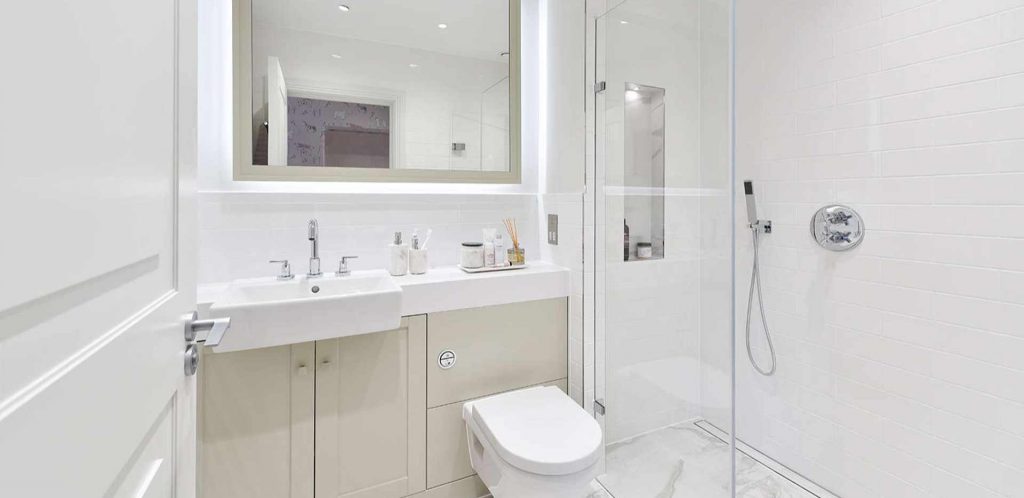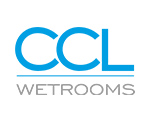
When considering a bathroom renovation, many people contemplate the idea of a wet room installation. Of those who choose not to go ahead, the reasoning can sometimes be somewhat misguided. There are a number of myths surrounding wet rooms that have often been born out of poor experiences, the majority of which have occurred due to inadequate design or installation, or a lack of regard for the most important element – waterproofing. Find out if the rumours you’ve heard are true, and why you really should opt for a wet room after all.
1. The whole bathroom will get flooded.
When some people think of wet rooms, their mind goes straight to leisure centre style showers which aren’t enclosed and are thoroughly drenched at all times. With this impression in mind, you’d be forgiven for thinking that a wet room equals an open bathroom with no shelter from water. In fact, wet rooms are much more sophisticated in design. With careful planning, which takes splash zones and waterproofing into consideration, and includes the installation of a glass screen, wetroom shower spray can easily be contained. This will prevent other bathroom appliances, towel rails and toilet rolls getting wet. In a wet room, the shower area is installed with a consistent gradient towards the drain, allowing water to drain away properly and prevent pooling across the wet floor.
2. Wet rooms can only be installed downstairs
Many people have the belief that wet rooms can only be installed downstairs because of the pressure of water on the bathroom floor. While poorly fitted wet rooms can cause problems in the form of leakages, a properly installed and waterproofed wet room will be fully water-tight wherever it is installed within the home. Simply ensure that the wetroom products that are being installed are appropriate to the floor build up. Most commonly, wetrooms located upstairs or in lofts are installed onto a timber floor construction, so it’s important that the wetroom products have been designed for use on timber floors. This will ensure that it functions effectively and will last for the lifetime of the tiles. And of course, don’t forget the waterproofing.
3. Wet rooms are always cold
Another common misnomer is that wetrooms are the coldest room in the house. The nature of a wet room dictates that the floor and walls of the shower area are completely tiled, and of course, tiles are widely associated with coldness. This can be entirely avoided though, by installing highly-effective wet room underfloor heating. Underfloor heating can transform your bathroom, and can in fact help to create an inviting, warm and cosy bathroom, with floor tiles that are warm to the touch. Just ensure that the electric underfloor heating is installed at least 300mm away from the wetroom drain so that the trap doesn’t dry out, and do not exceed 150 watts or 30°c per square metre.
4. Wet rooms get mouldy easily
The misconception that there is an increased presence of water in a wet room compared to a bathroom, has led many to believe that there is a higher chance of mould growth too. While it is true that if the wet room is poorly ventilated and left consistently wet, there is a chance that mould might appear, this is no more likely than with an ordinary bathroom. To reduce the risk of mould growth in a wetroom or bathroom, ensure there is sufficient ventilation from a window and/or extractor fan, keep shower screens and shower curtains clean, and wipe down excess water from your shower walls after use with an old towel. Ensure damp towels and bath mats are washed regularly and left to dry in well ventilated areas. As well as cleaning your wetroom regularly, these tips will help you to avoid problems with mould.
5. Wet rooms are a slip hazard
Some potential wet room users can be put off because they are under the impression that tiled floors are a slip hazard. Whilst it can be argued that a tiled floor is no more slippery than a wet shower tray, there are some easy ways of reducing the risk of slipping. Installing anti-slip tiles which have a more textured surface will help to increase the friction under foot and reduce the risk. With such an array of ceramic, natural stone and porcelain tiles available on the market, the choice of textured options is endless. One style of tile to avoid installing in a wetroom is a polished tile, which will become slippery when wet – just as they would on a kitchen floor.
With careful planning on all aspects of wetroom design & installation, wet rooms are entirely safe and 100% watertight. In fact, you could argue that a wetroom is safer than a standard bathroom, particularly as there isn’t a shower tray to step over or trip up on.
If your wet room worries have been abated, and you’re considering installing one, get in touch today. For some further inspiration, take a look at our wet room design gallery.









